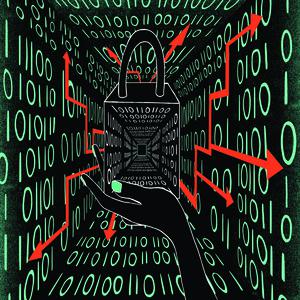In the fast-changing world of digital technology, Web3 has become a controversial subject, causing heated discussions among investors, tech experts, and wealthy individuals. If you have considerable financial means, you may wonder if Web3 is just a risky trend that will fail or if it represents the future of the digital world. Looking deeper shows a complicated environment that offers both dangers and amazing possibilities.

The Underlying Technological Breakthroughs
Web3 transcends being just a trendy term; it represents a fusion of advanced technologies capable of transforming the digital landscape. At its foundation lies blockchain, frequently misinterpreted as merely the basis for cryptocurrencies. However, the unchangeable ledger system of blockchain provides extensive possibilities well beyond financial applications. For example, it can enable decentralized identity systems that would replace traditional and often clunky identity verification processes, which can also be at risk of data theft. Wealthy individuals who prioritize their privacy and security could find substantial advantages in such systems, granting them more authority over their personal information.

Moreover, decentralized finance (DeFi) is gaining traction. Although media coverage has frequently highlighted the fluctuations in DeFi tokens, the core infrastructure is changing how traditional finance operates. Platforms for peer-to-peer lending that are based on blockchain technology enable users to transact directly without needing traditional intermediaries such as banks. This change lowers expenses and opens up new opportunities for investment that were previously inaccessible to many.. For instance, tokenization on Web3 platforms allows for fractional ownership of high-value items like luxury properties or fine art, enabling wealthy investors to explore new ways to diversify their investments.
Real - World Use Cases Beyond the Hype
Web3 is slowly establishing itself across different sectors, moving past initial speculation. In the arts, non-fungible tokens (NFTs) have changed how artists engage with collectors. While the first surge in NFTs was highlighted by remarkable sales of digital art, the technology is now being used in more functional ways. For example, luxury brands are leveraging NFTs to confirm product authenticity, making it easy for high-end buyers to verify their purchases. This method not only shields consumers from fake goods but also enhances the exclusivity of luxury products.In the gaming world, Web3 is introducing play-to-earn systems. Players have the ability to own game items as NFTs, which enables them to sell, trade, or utilize these items across different games. For affluent individuals who love gaming, this creates a new investment opportunity. Rather than just spending money on virtual items that lack real-world worth, they can now develop a collection of digital assets that may increase in value over time.

The Roadblocks and Skepticism
Although Web3 shows great potential, it encounters various obstacles that contribute to the notion of a “bubble.” One major issue is the uncertainty around regulations, as global governments find it difficult to establish rules for digital assets. This lack of clarity can put investors at risk of legal troubles and market manipulations. Furthermore, the intricate nature of Web3 technologies poses challenges for many users. The steps required to create a cryptocurrency wallet, grasp smart contracts, and engage with decentralized platforms require a significant amount of learning, which may discourage some investors.
In addition, the environmental consequences of blockchain technologies, particularly those using proof-of-work, have raised alarms. This can be off-putting for wealthy individuals concerned about environmental issues. Still, the field is changing, with numerous projects now adopting more eco-friendly consensus methods like proof-of-stake.
In summary, Web3 should not simply be seen as a bubble or a guaranteed future. It represents an emerging ecosystem filled with both dangers and opportunities. For wealthy individuals, the crucial aspect is to understand the core technologies, recognize valid use cases, and carefully manage the regulatory and technical hurdles. By doing so, they can position themselves to gain from the advancements that Web3 might offer while safeguarding their investments against the risks of any new technology.





